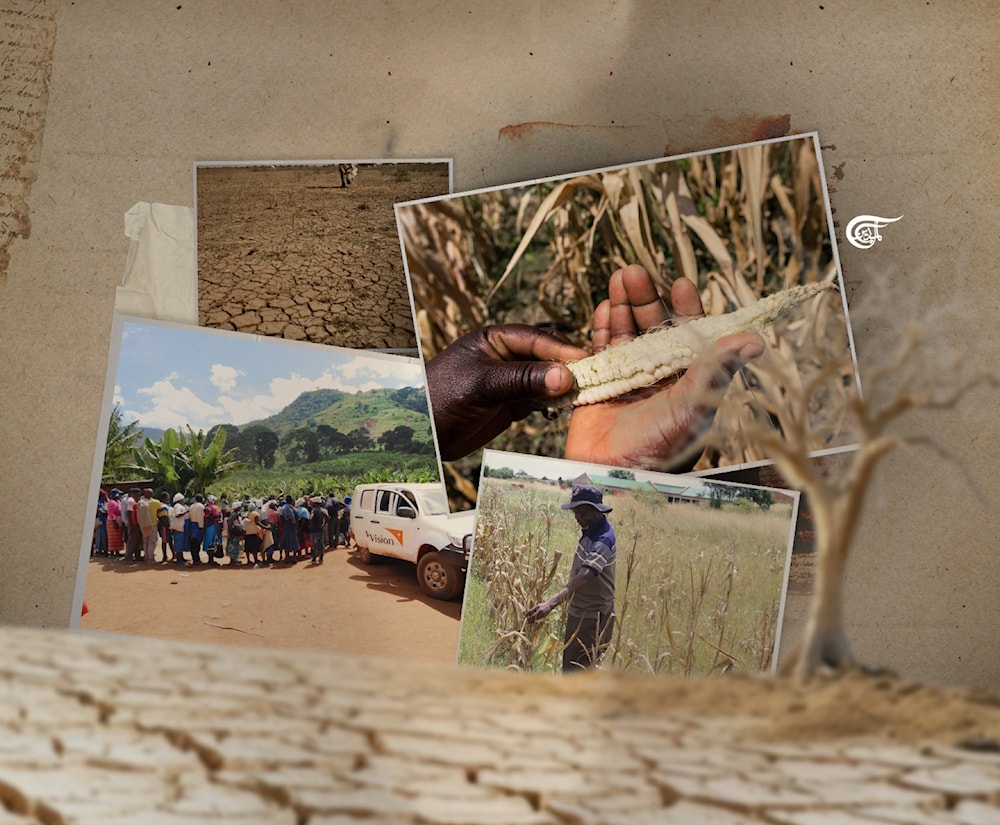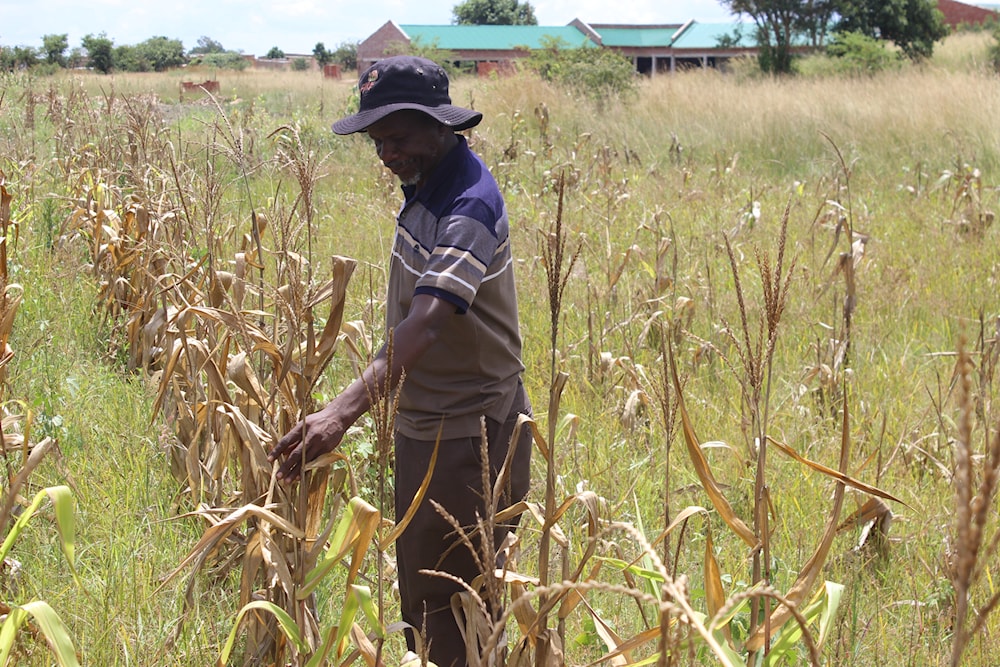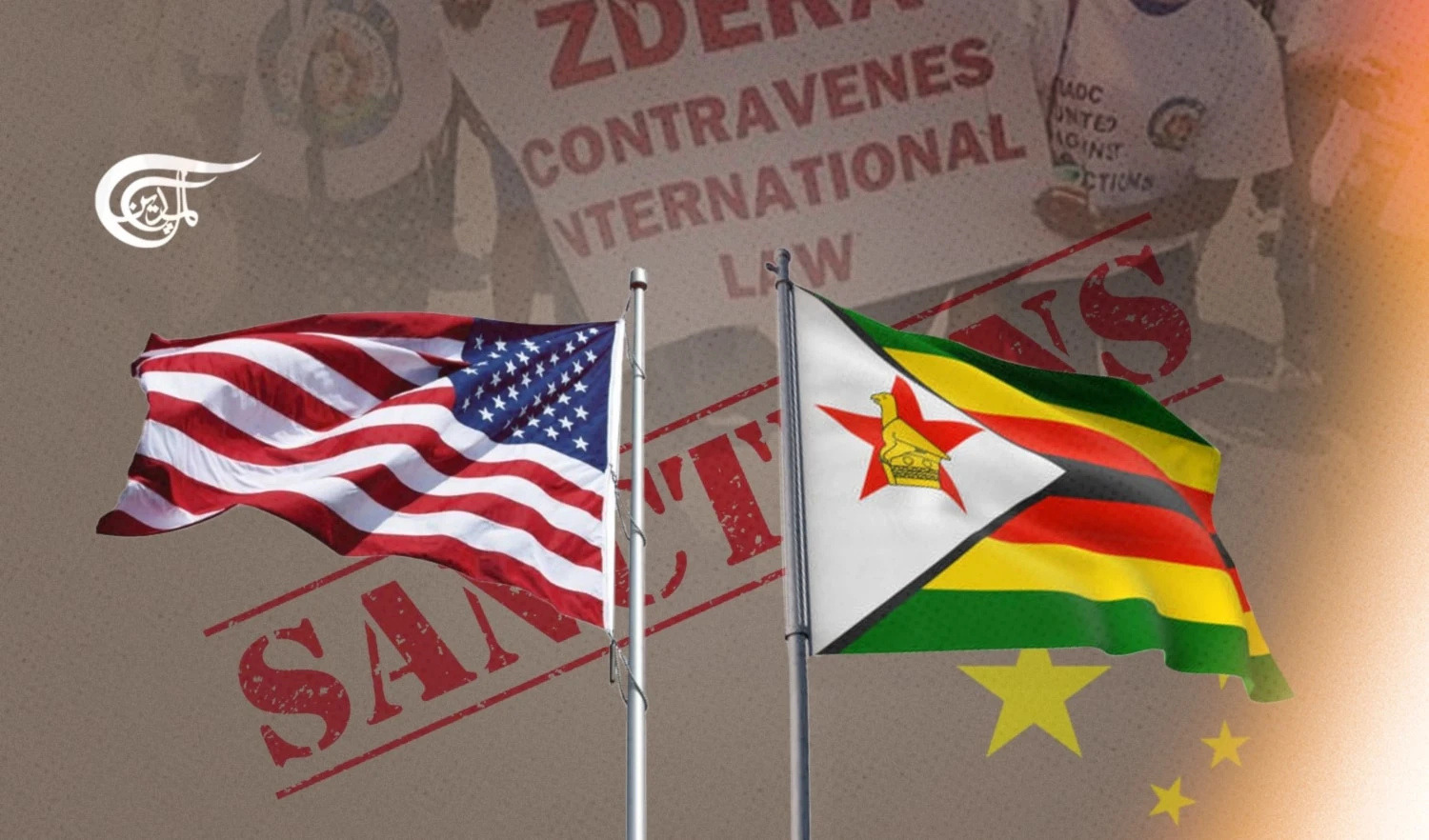60 million facing starvation in six Southern African countries
Aid agency say of these, 7.5 million are children, some of whom are already suffering from acute malnutrition.
-

UNICEF says 7.4 million children in these six southern African countries are living in child food poverty, of which over 2 million are surviving on extremely poor diets. (Al Mayadeen English; Illustrated by Zeinab El-Hajj)
More than 60 million people in southern Africa are experiencing severe food deficit, half of them facing a real threat of starvation, governments and humanitarian aid agencies say.
An El Ninõ-induced drought ravaged food crops in six southern African nations resulting in the growing hunger that is expected to last until the first quarter of 2025.
In what is regarded as the region’s worst drought in more than three decades, Botswana, Namibia, Lesotho, Malawi, Zambia, and Zimbabwe have all declared national state of food disasters and are scrambling for aid to avert mass-starvation.
‘The situation is critical’
“As a result of the El Ninõ droughts, it is projected that about 700,000 Basotho will need support to have food,” Lesotho prime minister Sam Matekane said as the tiny southern African country of 2.3 million became the sixth country to declare a national food insecurity disaster.
“The situation is critical, and we must take immediate action to alleviate the suffering of our people. We are appealing to national, regional, and international humanitarian organizations, as well as our friends and development partners, to join hands in this effort to support our citizens during this difficult time,” Matekane said.
-

Zimbabweans Queuing for Food Aid. (Cyril Zenda)
Zambia was the first country in the region to declare a state of food disaster in February when Hakainde Hichilema announced that the severe drought had affected nearly 10 million people in 84 of the country’s 116 districts. Hichilema appealed for $940 million to feed his nation.
In March, Malawi followed suit when President Lazarus Chakwera appealed for humanitarian assistance amounting to $447 million to feed 9 million people in 23 of the country’s 28 districts that have been affected by the drought.
President Emmerson Mnangagwa of Zimbabwe followed in April by announcing that 2.7 million people in the country were in immediate need of food, and he appealed for $2 billion to fund a multi-pronged strategy to address the situation. In May, after the completion of a comprehensive assessment of the situation, Zimbabwe revised its figures, increasing the number of needy to 9 million, with $3.3 billion required to mitigate the disaster.
Namibia was to follow, declaring a food disaster, and appealing for assistance to feed 340,000 households (1.4 million people). Botswana also made a similar appeal.
While other countries in the 16-member Southern African Development Community (SADC) have not declared their food situations disasters, some of them also have varying degrees of food shortages. As a result, SADC as a regional economic bloc has made a separate $5.5 billion food aid appeal on behalf of its members.
Prices of staple foods skyrocket
This is the second time in a decade that the El Ninõ phenomenon has caused a drought after also affecting the 2015/2016 farming season, leaving 40 million people in the region without food.
In the case of Zimbabwe, which suffered 80% crop failure, the Famine Early Warning Systems Network (FewsNet) says many rural communities have resorted to skipping meals as a coping mechanism as food prices have increased substantially.
“Currently, there is an above-normal reliance on markets for staple cereals, mainly maize meal, when most households should be relying on own-produced stocks,” the network noted.
“Prices range from $9-$12 per 17.5 kg bucket of maize, compared to the typical $3-$5 per bucket following a good season. There are currently very small to no price differences in surplus- and deficit-producing areas, with prices in some typical deficit areas marginally lower than in typical surplus areas.”
-

Cosmas Pikinini, a Zimbabwean farmer, inspects a failed maize (corn) plot that was abandoned because of drought. (Cyril Zenda)
Millions of children at high risk of starvation
UNICEF says 7.4 million children in these six southern African countries are living in child food poverty – of which over 2 million are surviving on extremely poor diets that include at most two food groups. The agency says vulnerable children are heavily impacted by climate shocks that dramatically lower the quantity, diversity, and quality of available food thereby negatively affecting the care of children and disrupting access to clean and safe water, exposing children to life-threatening childhood diseases including diarrhoea.
“The humanitarian needs children are facing due to El Niño are extremely concerning,” said UNICEF regional director for Eastern and Southern Africa, Etleva Kadilli.
“Increasing food insecurity and malnutrition, challenges in accessing safe water and sanitation, as well as risks to disease outbreaks such as cholera are a serious threat. Thousands of children are on the brink of being irreversibly impacted in their health and growth because of the climate-related crisis and this warning should not go unheard by the international community.”

 Cyril Zenda
Cyril Zenda
 5 Min Read
5 Min Read











